Teeth are more than just tools for eating—they’re weapons, status symbols, and vital tools for survival in the animal kingdom. Some animals have evolved teeth so massive and specialized that they defy imagination. From towering tusks to dagger-like canines, these remarkable adaptations showcase nature’s ingenuity and its sometimes fearsome beauty. In this list, we explore some of the largest and most fascinating teeth and tusks found in land animals. Each entry reveals the unique ways these animals use their incredible chompers to thrive in the wild.
1. African Elephant
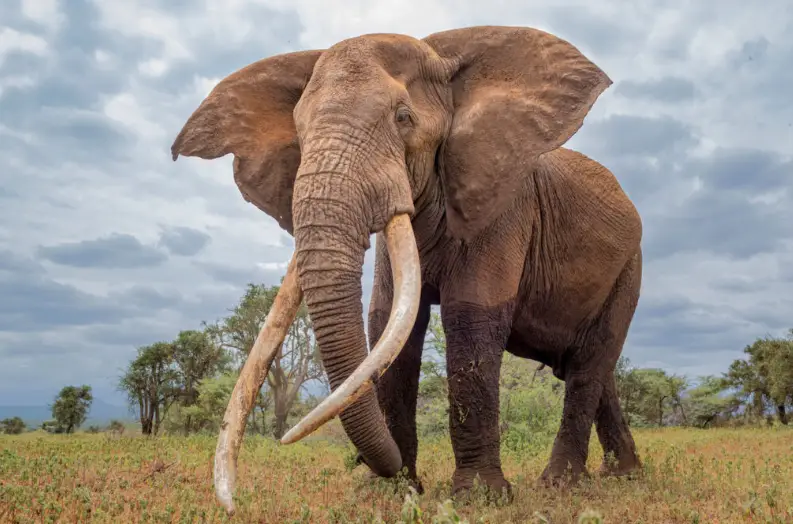
iStock
The African Elephant is unmatched in the size of its teeth—its tusks. These elongated incisors can grow up to 10 feet long and weigh over 100 pounds each. Elephants use their tusks for everything: digging for water, stripping bark from trees, moving obstacles, and even defense against predators. Male elephants often use their tusks in combat to establish dominance during mating season. Sadly, the sheer size and beauty of these tusks have also made elephants a target for poachers, leading to a tragic decline in their population.
2. Hippopotamus
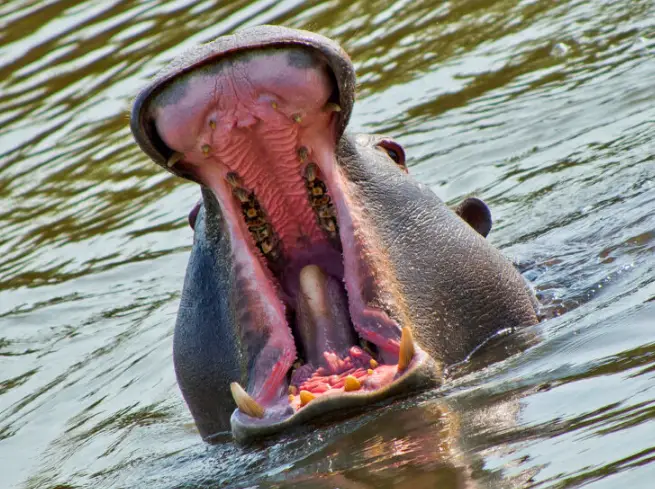
iStock
The Hippopotamus might seem docile while grazing on grass, but its massive teeth tell another story. Hippo canines and incisors can grow up to 1.5 feet long and are used primarily for combat and defense. Despite their herbivorous diet, hippos are extremely territorial and aggressive, often using their sharp teeth to assert dominance or fend off rivals. Their powerful jaws and teeth can crush boats, and their fearsome bite makes them one of Africa’s most dangerous animals.
3. Walrus
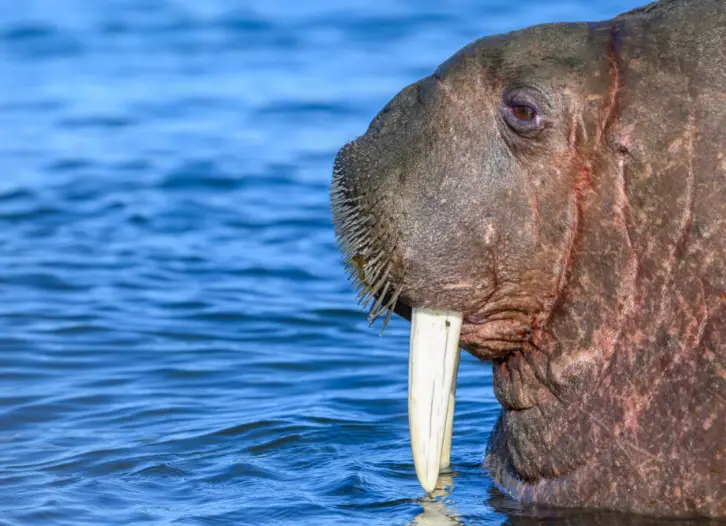
iStock
While primarily marine, Walruses spend significant time on land, making their tusks worth noting here. These ivory tusks, which are elongated canine teeth, can grow up to 3 feet long. Walruses use their tusks to haul their massive bodies onto ice, defend themselves from predators like polar bears, and assert dominance within their social groups. Their tusks are not just functional—they’re also sensitive tools that help walruses detect changes in their icy environment.
4. Asian Elephant

iStock
The tusks of Asian Elephants, though slightly smaller than their African relatives, can grow up to 6 feet long. These modified incisors serve similar purposes: stripping bark, digging for water, and fending off predators. Tusks also play a crucial role in establishing dominance among males during mating competitions, with the largest tusks often belonging to the most successful bulls.
5. Warthog
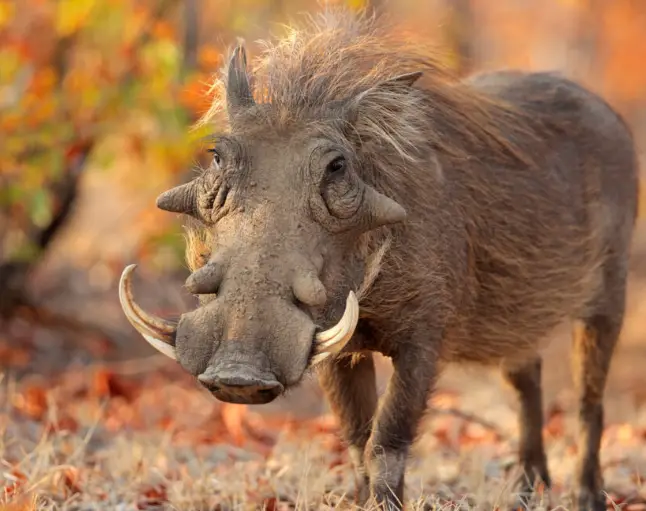
iStock
The Warthog’s curved tusks can grow up to 10 inches long, giving them a distinctive and somewhat menacing appearance. These tusks are used for digging, self-defense, and sparring between males. Warthogs sharpen their lower tusks by rubbing them against their upper ones, creating razor-sharp edges that make them formidable opponents for predators and rivals alike.
6. Rhinoceros
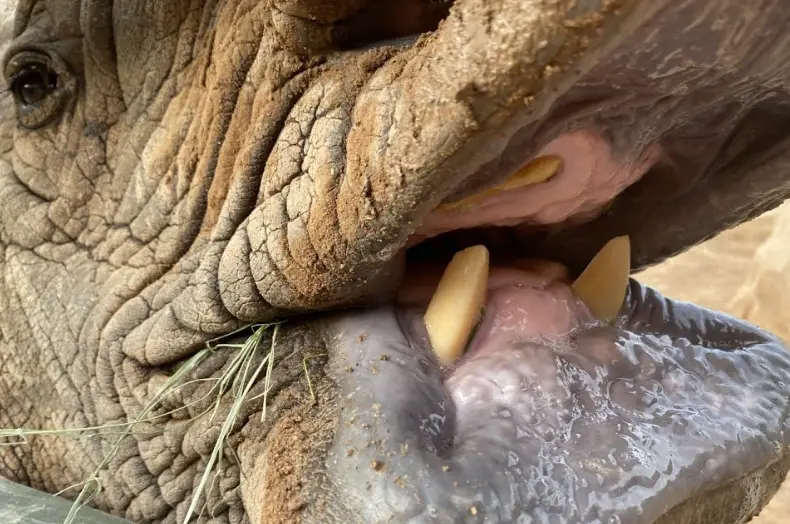
YouTube
While the iconic horn of a Rhinoceros often steals the spotlight, their sharp incisors and lower canines—particularly in Black Rhinos—can grow up to 5 inches long. These teeth are critical weapons in territorial disputes and for self-defense against predators. Combined with their massive size and strength, rhinos are among the most intimidating animals on land.
7. Bengal Tiger
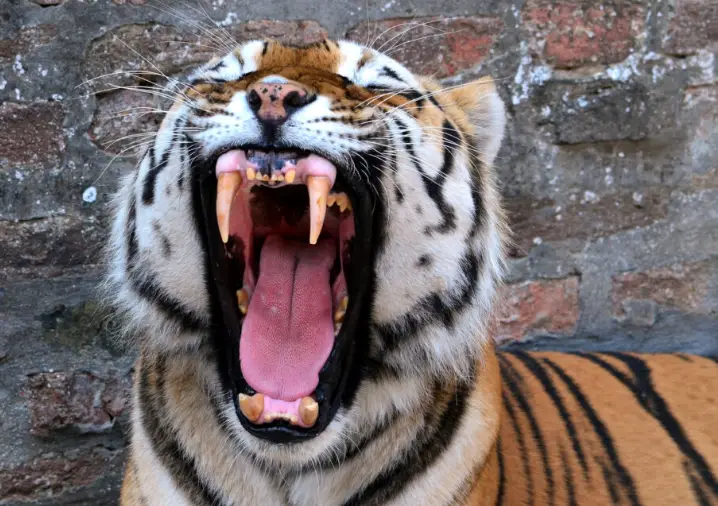
iStock
Bengal Tigers have the longest canines of any big cat, reaching up to 3.5 inches long. These dagger-like teeth are perfectly adapted for gripping and killing prey. Tigers rely on their powerful canines to deliver fatal bites to the throats or spines of animals like deer and wild boar, ensuring a quick and efficient hunt.
8. Giraffe
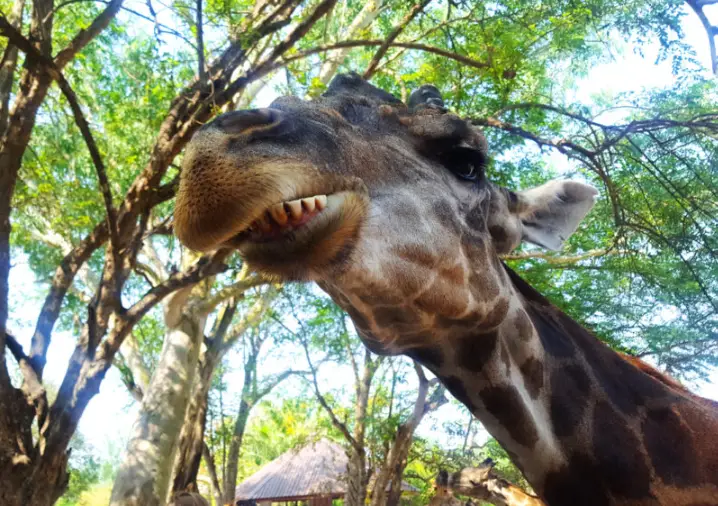
iStock
Giraffes don’t have sharp teeth, but their molars are among the largest for grinding tough vegetation. Measuring several inches in diameter, these flat teeth are essential for processing the fibrous leaves of acacia trees. Giraffes depend on their large molars to sustain their towering frames on their high-canopy diet.
9. Grizzly Bear
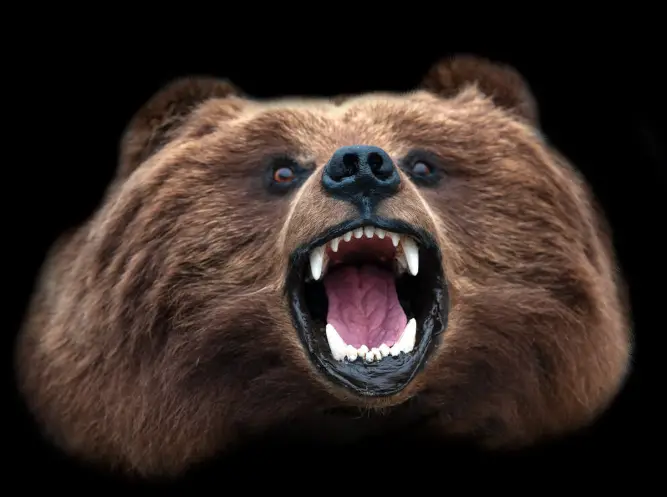
iStock
Grizzly Bears have canines that grow up to 3 inches long, which are crucial for tearing meat and defending themselves. As omnivores, Grizzlies also rely on their molars to grind plants and berries. Their sharp teeth highlight their dual role as predators and foragers in their ecosystems.
10. African Lion
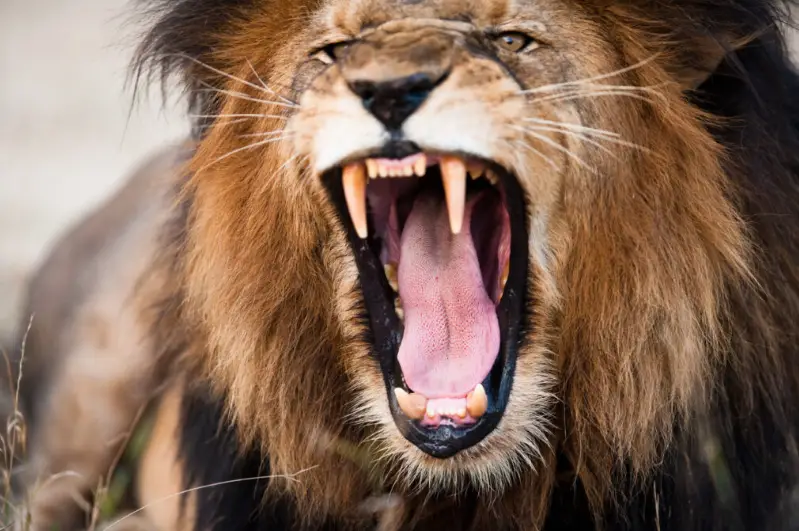
iStock
The African Lion’s iconic canines measure about 3 inches long. These teeth are vital for gripping and suffocating prey, enabling lions to bring down large animals like zebras and antelope. Combined with their powerful jaws, these teeth are a hallmark of the lion’s apex predator status.
11. Baboon
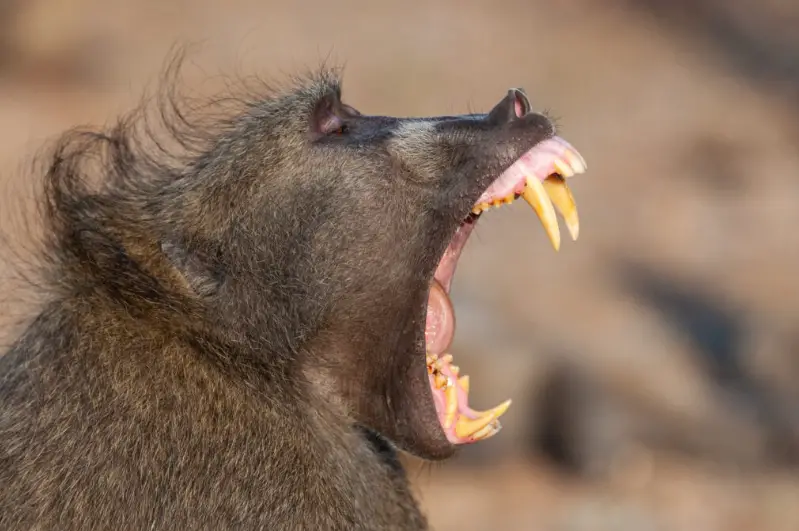
iStock
Baboons have sharp canines that can grow up to 2 inches long, which are used for self-defense and asserting dominance. Male baboons often flash their teeth during displays of aggression to warn rivals and predators, making their canines an important tool for survival.
Conclusion
The animal kingdom is full of incredible adaptations, and the massive teeth and tusks of these creatures are some of the most fascinating examples. From the towering tusks of elephants to the sharp canines of predators like lions and tigers, these teeth are not just functional—they tell the story of each animal’s evolution and survival. Whether used for digging, fighting, or eating, these impressive chompers remind us of the diversity and ingenuity of nature. It’s a world where every tooth has a purpose, and every purpose leaves us in awe.


